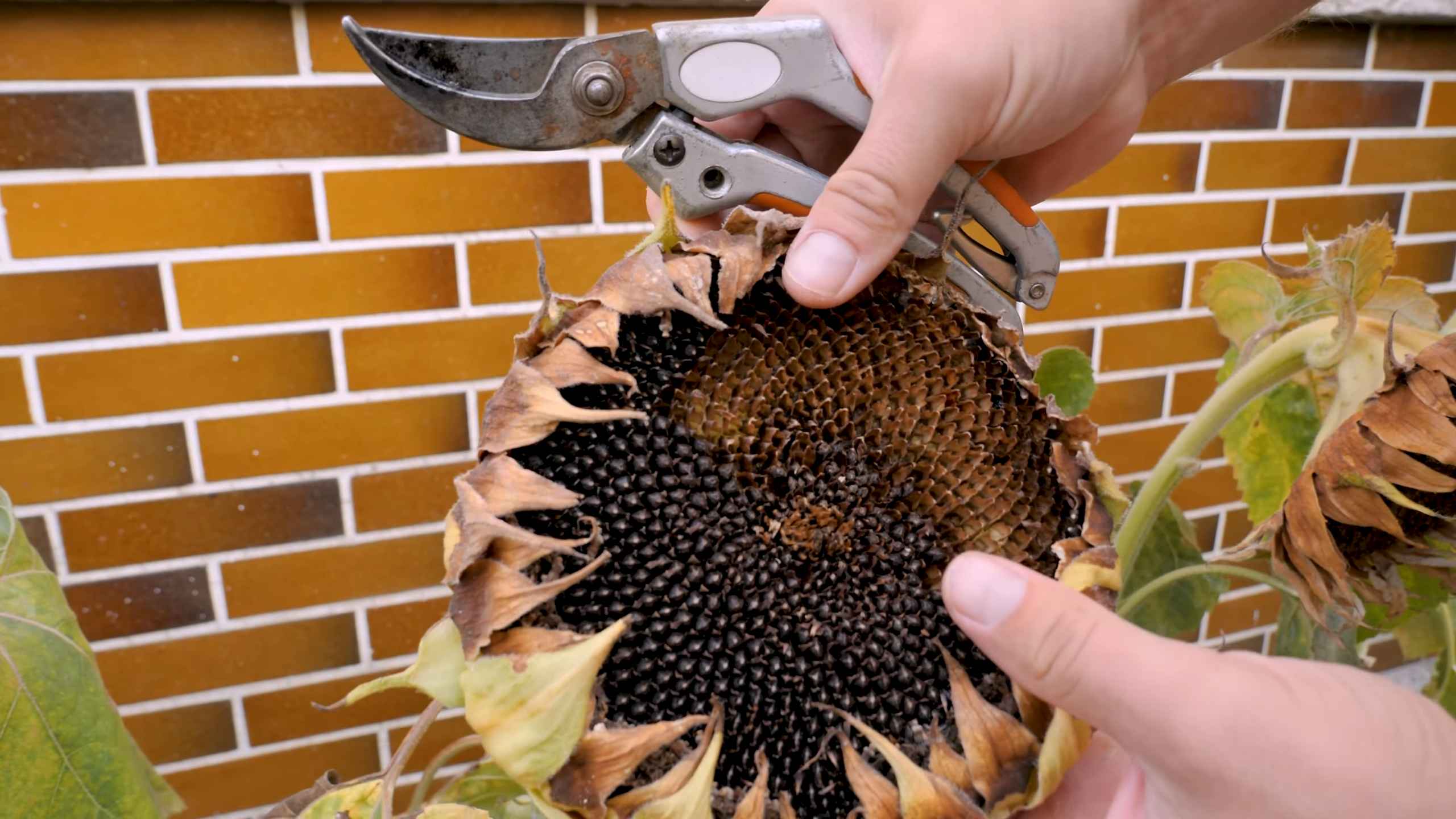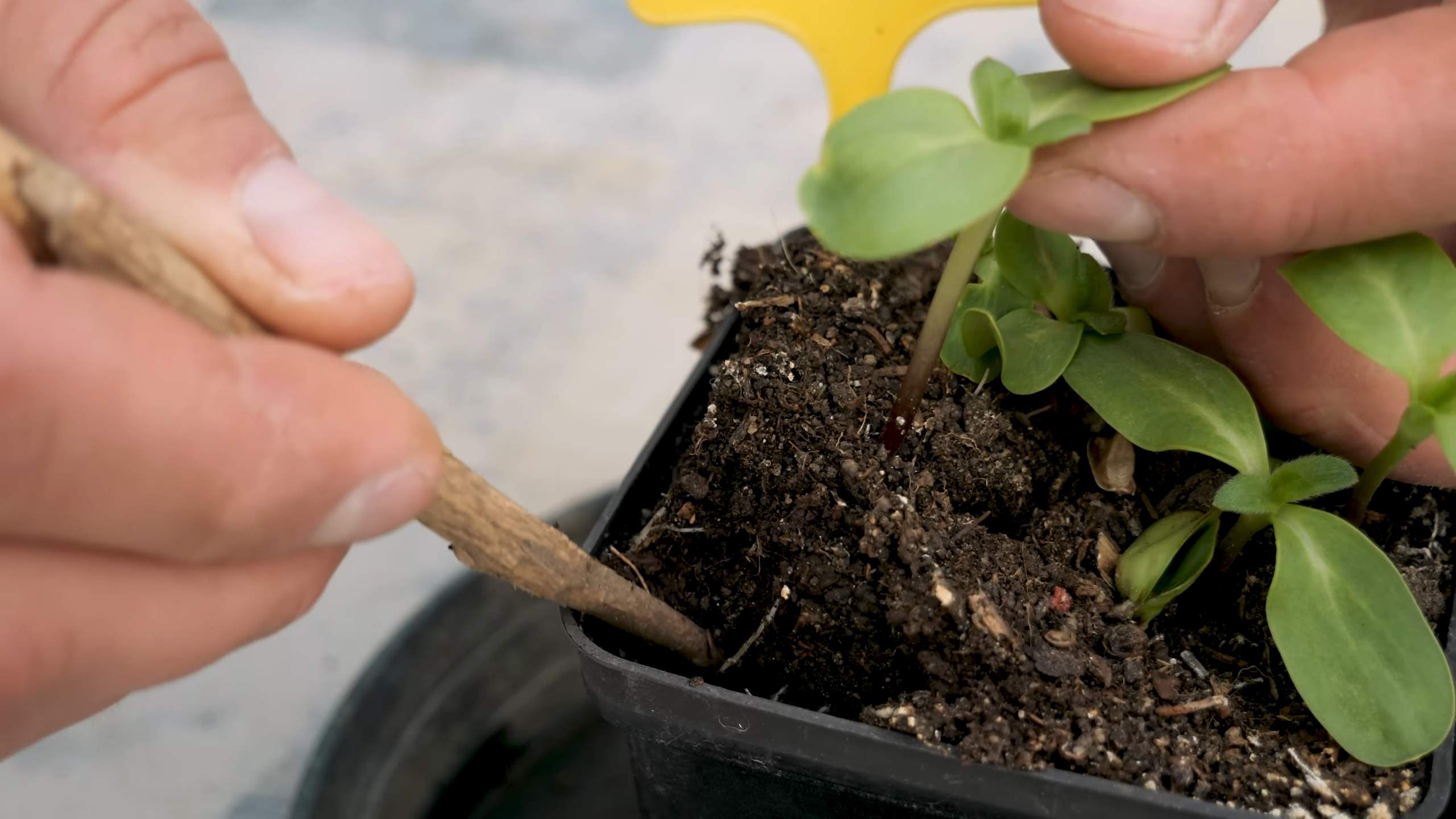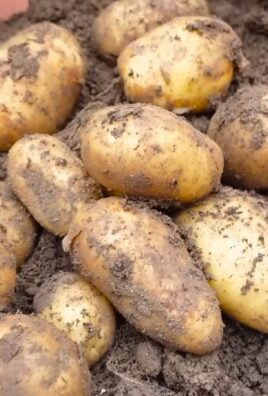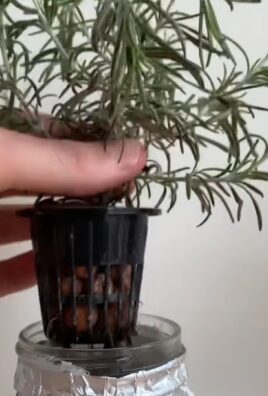Container Sunflowers Gardening: Imagine stepping onto your balcony or into your small backyard and being greeted by the cheerful faces of vibrant sunflowers, all grown by your own hand! Sounds idyllic, right? Well, it’s absolutely achievable, even without acres of land. For centuries, sunflowers have symbolized adoration, loyalty, and longevity, with roots tracing back to the indigenous peoples of North America who cultivated them not only for their beauty but also for food, oil, and medicinal purposes.
Today, we’re bringing this sunshine-filled tradition to your doorstep with easy and effective DIY tricks for container sunflowers gardening. In this article, I’ll share my favorite hacks to help you cultivate thriving sunflowers in pots, regardless of your experience level. Whether you’re a seasoned gardener or a complete newbie, these tips will empower you to create a stunning display of these iconic blooms.
Why do you need these DIY tricks? Because growing sunflowers in containers presents unique challenges. From choosing the right pot size and soil to ensuring adequate sunlight and support, there’s a lot to consider. But don’t worry, I’ve got you covered! I’ll guide you through each step, providing practical solutions and insider secrets to help you overcome common obstacles and achieve sunflower success. Let’s get started and transform your space into a sunny oasis!

Growing Gorgeous Container Sunflowers: A DIY Guide
Hey there, fellow plant enthusiasts! I’m so excited to share my tried-and-true method for growing stunning sunflowers right in containers. Forget needing a huge garden – with a little know-how, you can enjoy these sunny beauties on your balcony, patio, or even a sunny windowsill. Let’s get started!
Choosing the Right Sunflower Variety
First things first, not all sunflowers are created equal, especially when it comes to container gardening. You’ll want to choose a dwarf or compact variety that won’t outgrow its pot. Here are a few of my favorites:
* ‘Teddy Bear’: These fluffy, double-flowered sunflowers are super cute and only grow to about 2-3 feet tall.
* ‘Elf’: A true dwarf, ‘Elf’ sunflowers stay under 18 inches, making them perfect for smaller containers.
* ‘Little Becka’: This variety boasts beautiful bi-colored petals (red and yellow) and reaches about 2-3 feet.
* ‘Sundance Kid’: Another compact option with vibrant yellow petals, growing to around 2 feet.
* ‘Topolino’: A very compact variety, often reaching only 1 foot tall.
Important Tip: Always check the seed packet for the mature height of the sunflower before you buy it. This will save you from a potential “sunflower skyscraper” situation later on!
Gathering Your Supplies
Okay, now that we’ve picked our sunflower stars, let’s gather the supplies we’ll need. Here’s my checklist:
* Sunflower seeds: Obviously! Choose your favorite dwarf or compact variety.
* Large container: This is crucial! Sunflowers need room for their roots to grow. I recommend a pot that’s at least 12 inches in diameter and 12 inches deep, but bigger is always better.
* High-quality potting mix: Don’t skimp on this! Use a well-draining potting mix specifically formulated for containers. Garden soil is too heavy and can compact in pots.
* Slow-release fertilizer: This will provide your sunflowers with a steady supply of nutrients throughout the growing season.
* Watering can or hose: For, you know, watering.
* Small trowel or shovel: For planting.
* Optional:
* Drainage rocks or gravel: To improve drainage in the bottom of the pot.
* Plant support (stakes or bamboo poles): For taller varieties that might need a little extra support.
* Gardening gloves: To keep your hands clean.
Planting Your Sunflower Seeds
Alright, let’s get our hands dirty! Here’s how I plant my sunflower seeds in containers:
1. Prepare the container: If your container doesn’t already have drainage holes, make sure to drill some. Good drainage is essential for healthy sunflowers. I like to add a layer of drainage rocks or gravel to the bottom of the pot to further improve drainage.
2. Fill the container with potting mix: Fill the container with your high-quality potting mix, leaving about an inch or two of space at the top.
3. Add slow-release fertilizer: Sprinkle the slow-release fertilizer evenly over the surface of the potting mix, following the instructions on the fertilizer package.
4. Plant the seeds: Make small holes about 1 inch deep and 2-3 inches apart. Place one or two sunflower seeds in each hole. Planting two seeds per hole increases the chances of at least one germinating.
5. Cover the seeds: Gently cover the seeds with potting mix and lightly pat down the soil.
6. Water thoroughly: Water the container thoroughly until water drains out of the bottom. This will help settle the soil and ensure the seeds have good contact with the moisture.
7. Place in a sunny location: Sunflowers need at least 6-8 hours of direct sunlight per day. Place your container in the sunniest spot you can find.
Caring for Your Container Sunflowers
Now that your sunflowers are planted, it’s time to give them the TLC they need to thrive. Here’s my care routine:
1. Watering: Sunflowers need consistent moisture, especially during hot weather. Water deeply whenever the top inch of soil feels dry to the touch. Avoid overwatering, as this can lead to root rot. I usually water every day or two, depending on the weather.
2. Fertilizing: The slow-release fertilizer you added at planting should provide your sunflowers with nutrients for several weeks. After that, you can supplement with a liquid fertilizer every 2-3 weeks. Choose a fertilizer that’s high in phosphorus (the middle number on the fertilizer label), as this promotes strong root growth and flowering.
3. Sunlight: As I mentioned earlier, sunflowers need plenty of sunlight. Make sure your container is in a location that receives at least 6-8 hours of direct sunlight per day. If your sunflowers start to lean towards the sun, you can rotate the container regularly to ensure they get even sunlight exposure.
4. Pest control: Keep an eye out for common sunflower pests like aphids, spider mites, and snails. If you spot any pests, you can try spraying them with insecticidal soap or neem oil. I prefer to use organic pest control methods whenever possible.
5. Support: Taller sunflower varieties may need some extra support to prevent them from toppling over. You can use stakes or bamboo poles to support the stems. Gently tie the stems to the stakes with twine or plant ties.
6. Deadheading: Once your sunflowers start to bloom, deadhead (remove) any spent flowers to encourage more blooms. Simply cut off the flower head just below the stem.
Dealing with Common Problems
Even with the best care, you might encounter a few problems along the way. Here are some common issues and how I deal with them:
* Leggy growth: If your sunflowers are getting tall and spindly with few leaves, it’s likely they’re not getting enough sunlight. Move the container to a sunnier location.
* Yellowing leaves: Yellowing leaves can be a sign of overwatering, underwatering, or nutrient deficiency. Check the soil moisture and adjust your watering accordingly. If the soil is consistently moist, you might be overwatering. If the soil is dry, you need to water more often. You can also try fertilizing with a balanced fertilizer.
* Powdery mildew: Powdery mildew is a fungal disease that can cause a white, powdery coating on the leaves. To prevent powdery mildew, make sure your sunflowers have good air circulation and avoid overhead watering. If you see signs of powdery mildew, you can spray the affected leaves with a fungicide.
* Pests: As mentioned earlier, keep an eye out for pests and treat them promptly.
Harvesting Sunflower Seeds (Optional)
If you want to harvest sunflower seeds, you’ll need to let the flower heads mature completely. Here’s how I do it:
1. Wait for the flower head to droop: Once the flower head starts to droop and the back of the head turns brown, it’s a sign that the seeds are maturing.
2. Cover the flower head: To protect the seeds from birds and squirrels, cover the flower head with a paper bag or cheesecloth. Secure the bag with twine or a rubber band.
3. Let the seeds dry: Allow the flower head to dry completely on the plant. This can take several weeks.
4. Harvest the seeds: Once the flower head is dry, cut it off the stem and bring it indoors. Rub the flower head with your hands to release the seeds.
5. Dry the seeds further: Spread the seeds out on a tray and let them dry for a few more days.
6. Store the seeds: Store the dried seeds in an airtight container in a cool, dry place.
Important Note: Not all sunflower varieties produce edible seeds. Check the seed packet to make sure your variety is suitable for seed harvesting.
Enjoying Your Beautiful Sunflowers
The best part of growing container sunflowers is, of course, enjoying their beauty! These cheerful flowers will brighten up any space and attract pollinators like bees and butterflies. Cut a few blooms to bring indoors and enjoy their sunny presence in your home.
I hope this guide has inspired you to try growing your own container sunflowers. It’s a rewarding and fun project that anyone can do. Happy gardening!

Conclusion
So, there you have it! Growing your own container sunflowers isn’t just a fun project; it’s a rewarding experience that brings a burst of sunshine right to your doorstep. We’ve walked through the simple steps, from selecting the right variety to providing the essential care, and hopefully, dispelled any myths about sunflowers being exclusively for sprawling fields.
The beauty of this DIY trick lies in its accessibility. Whether you have a sprawling garden or a tiny balcony, you can cultivate these cheerful giants. Imagine waking up each morning to the sight of vibrant yellow petals reaching for the sky, a constant reminder of the beauty and resilience of nature. Beyond the aesthetic appeal, growing your own sunflowers offers a unique connection to the natural world, a chance to witness the miracle of growth firsthand.
But why is this DIY trick a must-try? Because it’s more than just growing a flower. It’s about creating a miniature ecosystem, attracting pollinators like bees and butterflies to your space, and contributing to a healthier environment. It’s about teaching children about the life cycle of plants and fostering a love for gardening. And, let’s be honest, it’s about the sheer joy of harvesting your own sunflower seeds for a healthy snack or to share with friends and family.
Consider these variations to personalize your container sunflower gardening experience:
* Dwarf Varieties: Experiment with different dwarf varieties for a more compact display. ‘Teddy Bear’ and ‘Little Becka’ are excellent choices for smaller spaces.
* Colored Sunflowers: Venture beyond the traditional yellow and explore sunflowers in shades of red, orange, and even chocolate brown. ‘Autumn Beauty’ is a popular choice for its multi-colored blooms.
* Succession Planting: Plant seeds every few weeks to enjoy a continuous bloom throughout the growing season.
* Companion Planting: Plant herbs like basil or rosemary around your sunflowers to deter pests and enhance their growth.
* Creative Containers: Don’t limit yourself to traditional pots. Repurpose old buckets, barrels, or even galvanized tubs for a rustic and charming look. Just ensure they have adequate drainage.
We’ve given you the tools and knowledge; now it’s your turn to get your hands dirty! Don’t be afraid to experiment, learn from your mistakes, and most importantly, have fun. The satisfaction of nurturing a tiny seed into a towering sunflower is an experience you won’t soon forget.
So, grab your seeds, prepare your soil, and get ready to embark on your container sunflower gardening adventure. We’re confident that you’ll be amazed by the results.
We encourage you to try this DIY trick and share your experiences with us! Post photos of your container sunflowers on social media using #ContainerSunflowers and tag us so we can see your beautiful creations. We can’t wait to see what you grow! Let’s spread the sunshine, one container sunflower at a time.
Frequently Asked Questions (FAQ)
What is the best time to plant sunflower seeds in containers?
The ideal time to plant sunflower seeds is after the last frost in your area, when the soil has warmed up to at least 60°F (15°C). Sunflowers thrive in warm weather, so planting them too early can hinder their growth. Generally, late spring to early summer is the perfect window. You can start seeds indoors 2-3 weeks before the last expected frost to get a head start, but be sure to harden them off before transplanting them outdoors.
What size container do I need for growing sunflowers?
The size of the container depends on the variety of sunflower you’re growing. For dwarf varieties, a container that is at least 12 inches in diameter and 12 inches deep should suffice. For larger varieties, opt for a container that is at least 18-24 inches in diameter and 18-24 inches deep. The larger the container, the more room the roots will have to grow, resulting in a healthier and more robust plant. Ensure the container has adequate drainage holes to prevent waterlogging.
What type of soil is best for container sunflowers?
Sunflowers prefer well-draining soil that is rich in organic matter. A good potting mix specifically formulated for containers is ideal. You can also amend your own soil by mixing equal parts of garden soil, compost, and perlite or vermiculite. This will provide the necessary nutrients and drainage for healthy sunflower growth. Avoid using heavy clay soil, as it can become waterlogged and suffocate the roots.
How often should I water my container sunflowers?
Sunflowers need consistent watering, especially during hot and dry periods. Water deeply whenever the top inch of soil feels dry to the touch. Avoid overwatering, as this can lead to root rot. The frequency of watering will depend on the weather conditions, the size of the container, and the variety of sunflower. As a general rule, water thoroughly 2-3 times per week, but check the soil moisture regularly to adjust accordingly.
Do container sunflowers need fertilizer?
Yes, sunflowers benefit from regular fertilization, especially during their active growing season. Use a balanced fertilizer (e.g., 10-10-10) diluted to half strength every 2-3 weeks. You can also use a slow-release fertilizer at the time of planting. Avoid over-fertilizing, as this can lead to excessive foliage growth at the expense of flower production.
How much sunlight do container sunflowers need?
Sunflowers are sun-loving plants and require at least 6-8 hours of direct sunlight per day. Choose a location for your container sunflowers that receives ample sunlight throughout the day. If your sunflowers are not getting enough sunlight, they may become leggy and produce fewer flowers.
How do I protect my container sunflowers from pests and diseases?
Sunflowers are generally resistant to pests and diseases, but they can be susceptible to certain problems. Common pests include aphids, spider mites, and sunflower beetles. These can be controlled with insecticidal soap or neem oil. Diseases such as powdery mildew and rust can also affect sunflowers. These can be prevented by ensuring good air circulation and avoiding overhead watering. If you notice any signs of pests or diseases, treat them promptly to prevent them from spreading.
Can I grow sunflowers indoors?
While it is possible to start sunflower seeds indoors, it is not recommended to grow them indoors for their entire life cycle. Sunflowers require a lot of sunlight, which is difficult to provide indoors. If you do start seeds indoors, be sure to provide them with plenty of light and transplant them outdoors as soon as the weather permits.
How do I harvest sunflower seeds from my container sunflowers?
The best time to harvest sunflower seeds is when the back of the flower head turns brown and the seeds begin to loosen. You can cut the flower head off the stalk and hang it upside down in a dry, well-ventilated place for a few weeks to allow the seeds to dry completely. Once the seeds are dry, you can easily remove them from the flower head.
Are all sunflower seeds edible?
Yes, most sunflower seeds are edible, but some varieties are specifically grown for seed production. These varieties typically have larger seeds and a higher oil content. Be sure to choose a variety that is labeled as edible if you plan to harvest the seeds for consumption.
Can I save seeds from my container sunflowers to plant next year?
Yes, you can save seeds from your container sunflowers to plant next year. Choose seeds from the healthiest and most vigorous plants. Allow the seeds to dry completely before storing them in an airtight container in a cool, dark place.
My sunflower is drooping, what should I do?
Drooping can be caused by several factors. First, check the soil moisture. If the soil is dry, water deeply. If the soil is waterlogged, allow it to dry out. Drooping can also be caused by lack of sunlight. Ensure your sunflower is getting at least 6-8 hours of direct sunlight per day. Finally, drooping can be a sign of disease or pest infestation. Inspect your plant carefully for any signs of problems and treat accordingly.
How do I prevent my container sunflower from falling over?
Tall sunflower varieties can become top-heavy and prone to falling over, especially in windy conditions. To prevent this, provide support for your sunflowers by staking them with bamboo stakes or tomato cages. You can also plant them in a sheltered location that is protected from strong winds.
Can I grow multiple sunflowers in one container?
Yes, you can grow multiple sunflowers in one container, but be sure to space them adequately. For dwarf varieties, you can plant 2-3 sunflowers in a 12-inch container. For larger varieties, plant only one sunflower per container. Overcrowding can lead to stunted growth and reduced flower production.




Leave a Comment